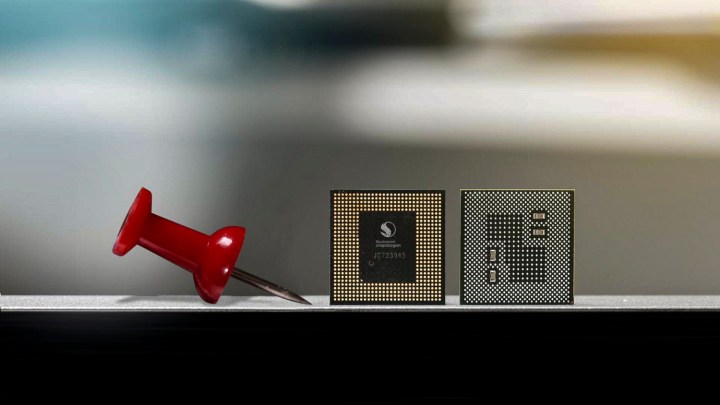
New details about the rumored Qualcomm Snapdragon 1000 system on chip (SoC) suggest that it will be powerful enough to compete directly with Intel’s Y- and U-series Core processors, but do so with a lower power draw. Better yet, we’re told it’s physically smaller too, despite being much larger than Qualcomm’s typical Snapdragon SoCs.
Qualcomm’s Snapdragon processors are typically used in mobile devices such as smartphones and tablets. They offer good general processing and graphics performance at a lower power draw than chips from the typical desktop manufacturers like Intel and AMD. However, laptop manufacturers have begun to offer Qualcomm-equipped systems to those wanting an alternative option and the Snapdragon 1000 could be the most impressive offering in that space to date.
The latest details come from a report by German website, WinFuture, which claims that it will be an even more powerful chip than the already laptop-oriented Snapdragon 850 (a higher-clocked, optimized for Windows PCs SoC). Ars Technica translates that the Snapdragon 1000 will have a total power draw of 12w, which puts it squarely between Intel’s 4.5w and 15w Y- and U-series Core CPUs.
That power draw is much higher than the upcoming 6.5w pulled by Snapdragon 850 and there’s a larger physical footprint to go with it. Where the 850 measures 12 x 12mm, the 1000 is said to be as large as 20 x 15mm. However, as Ars Technica highlights, that’s still much smaller than Intel’s comparable offerings. It is slated to be roughly as powerful though, with claimed performance around that of 2017 Intel Core CPUs.
If that turns out to be true, that would mean a significant new wrinkle in the Windows laptop canvas, as it could mean smaller devices, with lower-profile cooling options and better battery life all in one package. While we’ll need to wait to hear the official announcements to learn how accurate these early claims are, if they turn out to be true, Qualcomm could become a serious competitor in the laptop hardware space in the near future.
With AMD’s Ryzen CPU drive over the past year and its intriguing APU offerings providing serious graphical competition for Intel, the portable computing market is more intriguing and wide today than it’s been in years. Considering how much desktop PC gamers have suffered in the past year, that’s a refreshing change of pace.



